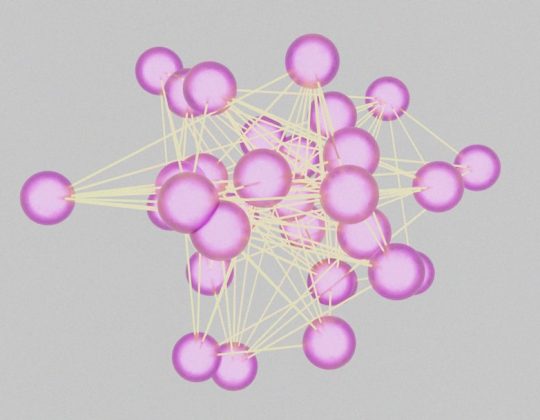You’re trying to edit a file, and Claude throws a code error. Ugh! We’ve all been there. Don’t worry, though. This guide will walk you through simple, fun, and effective ways to fix Claude code errors when you’re editing files.
TLDR (Too Long, Didn’t Read)
The Claude code error usually pops up when you try to edit a file in a format Claude didn’t expect, or when the file isn’t structured correctly. You can fix it by checking the file type, making sure your syntax is clean, and not confusing Claude with strange characters. Follow a few easy steps below and you’ll be back in action in no time.
What Is a Claude Code Error?
A Claude code error is like a computer’s way of saying, “Hey! I don’t understand what you’re trying to do.”
It usually happens when:
- The file format is not supported
- You’ve got messy or broken code
- You’re feeding Claude something it’s not expecting
Think of it like trying to play a saxophone with a banana. Claude’s smart, but it still needs clear instructions.
Step-by-Step Guide to Fixing Claude Code Errors
1. Double Check the File Format
Make sure the file you’re uploading is one Claude understands. These are usually:
- .txt files
- .md Markdown files
- .json or .yaml for structured data
- .py for Python scripts
If you’re giving Claude a .docx or .pdf file, it might scratch its digital head and throw a code error. Try converting your file to plain text first.

2. Clean Up Your Code
Messy code is the #1 cause of Claude confusion. Make sure your code is clean and error-free. Here’s a quick checklist:
- Brackets – Each opening bracket should have a matching closing bracket
- Quotes – Don’t forget to close them!
- Indentation – Keep your tabs and spaces neat
- Comments – Remove any confusing or broken comments
If Claude sees a half-finished loop or a rogue semicolon, it may get fussy. Run your code through a linter if you’re not sure.
3. Watch Out for Special Characters
Exotic characters like emojis, symbols, or even smart quotes (like “this” instead of “this”) can throw Claude off.
Stick to the basics. Use standard punctuation and avoid formatting copied from word processors.
4. Validate Structured Data Files
If you’re working with JSON or YAML files, make sure they’re properly formatted.
For example:
// Incorrect JSON
{
"name": "Alice,
"age": 25,
}
// Correct JSON
{
"name": "Alice",
"age": 25
}
You can run your JSON or YAML through an online validator to check for mistakes. One bad quote or comma can throw everything off!

5. Use Comments to Guide Claude
Sometimes Claude isn’t sure what you want. Adding clear comments can help. For example:
# This Python function adds two numbers
def add(a, b):
return a + b
A short description can work wonders to steer Claude in the right direction. It’s like giving better instructions to a super helpful robot.
6. Break It into Smaller Pieces
Big files can be overwhelming, even for Claude. Try breaking your content into smaller sections and editing one part at a time.
This helps Claude focus and makes it easier for you to spot where things go wrong.
7. Check Claude’s Prompt Settings
If you’re using a particular setup or configuration with Claude, make sure nothing funky is going on in the prompt options.
Settings like temperature, token limit, and prompt format can influence how Claude reads your input. If it’s set up strange, you might get weird results.
8. Try Another Editor First
If your file won’t behave, open it in a coding-friendly editor like:
- VS Code
- Sublime Text
- Notepad++
It’s easier to catch formatting issues or invisible characters with these tools. Once things look good, try putting your file back into Claude.
What If You’re Still Stuck?
Don’t panic. Here’s what you can do:
- Copy the first few lines of your file and paste them into Claude to see if it handles them
- Use Claude’s “Explain this error” feature (if available)
- Start fresh with a clean file and move your content bit by bit
- Check online communities like Reddit or Discord to see if others had the same issue (and how they solved it)
Using trial and error is a legit strategy when dealing with any AI tool. Claude learns fast—but it also makes some silly mistakes!
Quick Claude Code Fix Recipes
Fix a Markdown Header Error
// Problem:
#HeaderMissingSpace
// Fix:
# Header With Space
Fix a Broken Python Function
// Problem:
def greet(name)
print("Hello", name)
// Fix:
def greet(name):
print("Hello", name)
Fix a Malformed JSON
// Problem:
{ "name" "Bob" }
// Fix:
{ "name": "Bob" }
Final Thoughts
Claude is smart, but it’s not magic. A little prep work on your side goes a long way. Keep your files clean, simple, and easy to read. Avoid fancy characters, broken syntax, or weird formatting, and Claude will love you forever (or at least won’t throw a tantrum).
And hey—next time Claude gives you an error, just smile and say, “Challenge accepted.”
Happy editing!








